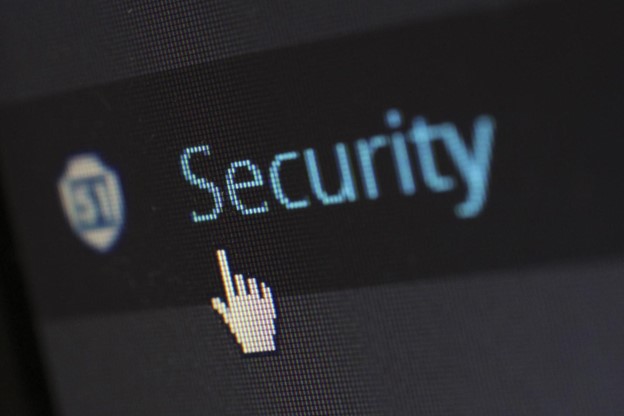A Comprehensive Guide To DApps Security In Web3
The advent of Web3 and the rise of decentralized applications (DApps) have ushered in a new era of innovation, autonomy, and user empowerment. However, with this paradigm shift comes the need for heightened security awareness, as the decentralized nature of DApps introduces unique challenges and considerations. In this comprehensive guide, we will explore the intricacies of DApps security in Web3 and provide practical insights to help users stay safe in this evolving digital landscape.
Understanding DApps and Web3

1. Decentralized Applications (DApps) Defined:
DApps are applications built on blockchain technology, functioning on a decentralized network of nodes rather than traditional central servers. These applications leverage smart contracts to execute code, fostering transparency, and eliminating the need for intermediaries.
2. Web3 and the Decentralized Web:
Web3 represents the third generation of the internet, emphasizing decentralization, user control, and interoperability. In the context of DApps, Web3 facilitates direct peer-to-peer interactions, enabling users to interact with decentralized services seamlessly.
Also, read – Top 5 Uses of dApps In The Web3 Technology
Key Security Considerations for DApps Users

Decentralized Applications (DApps) have gained significant popularity, offering users decentralized and transparent alternatives to traditional applications. However, users of DApps need to be aware of key security considerations to safeguard their assets and data. Here’s a detailed exploration of the crucial security factors for DApp users:
1. Smart Contract Audits:
- Importance: Smart contracts are the backbone of many DApps, executing code on the blockchain. It’s crucial that these contracts are audited for security vulnerabilities.
- Risk: Vulnerabilities in smart contracts, such as reentrancy attacks or unchecked user inputs, can lead to exploits and loss of funds.
- Mitigation: Regular audits by reputable third-party firms and transparent disclosure of the audit results can provide assurance to users.
2. User Authentication and Authorization:
- Importance: Proper user authentication ensures that only authorized individuals can interact with the DApp, preventing unauthorized access.
- Risk: Inadequate authentication can lead to unauthorized access, identity theft, and manipulation of user data.
- Mitigation: Implementation of secure authentication protocols, multi-factor authentication, and encryption of user data are essential measures.
3. Data Privacy and Encryption:
- Importance: DApp users often provide personal information. Protecting this data from unauthorized access is critical for user privacy.
- Risk: Data breaches can lead to identity theft, fraud, and other privacy violations.
- Mitigation: Encryption of sensitive data, secure storage practices, and adherence to privacy regulations enhance data protection.
4. Secure Wallet Management:
- Importance: Users interact with DApps using blockchain wallets. Proper wallet management is crucial for protecting digital assets.
- Risk: Insecure wallet practices, such as using compromised wallets or sharing private keys, can result in the loss of funds.
- Mitigation: Educating users on secure wallet practices, using hardware wallets, and implementing secure key storage mechanisms enhance wallet security.
5. Phishing and Social Engineering Attacks:
- Importance: Users may be targeted by phishing attacks, where malicious entities attempt to deceive them into revealing sensitive information.
- Risk: Falling victim to phishing can lead to unauthorized access to accounts and loss of funds.
- Mitigation: User education on recognizing phishing attempts, using secure communication channels, and employing browser extensions for added security.
6. Transaction Confirmation:
- Importance: Users should verify and confirm transactions before executing them on the blockchain.
- Risk: Unintended transactions due to user error or malicious activity can result in irreversible loss of assets.
- Mitigation: Implementing clear transaction confirmation processes, including transaction details and gas fees, helps users make informed decisions.
7. Regular Software Updates:
- Importance: DApp developers should regularly update their software to patch vulnerabilities and improve security.
- Risk: Outdated software may have known vulnerabilities that malicious actors can exploit.
- Mitigation: Users should ensure they are using the latest version of the DApp and developers should prioritize timely updates and security patches.
8. Community Reputation and Reviews:
- Importance: Users should consider the reputation and reviews of a DApp within the community before interacting with it.
- Risk: Malicious or poorly designed DApps may exploit users or have security flaws.
- Mitigation: Users can conduct due diligence, read reviews, and participate in community discussions to gauge the legitimacy and security of a DApp.
9. Regulatory Compliance:
- Importance: DApps and their users should be aware of and comply with relevant regulations to mitigate legal risks.
- Risk: Non-compliance may lead to legal consequences or regulatory actions.
- Mitigation: Staying informed about regulatory requirements and ensuring DApp operations align with legal frameworks contribute to a secure user experience.
10. Community Awareness and Education:
- Importance: Educating users about potential security risks and best practices is essential for creating a vigilant community.
- Risk: Uninformed users may fall victim to common security pitfalls.
- Mitigation: Community-driven awareness campaigns, educational resources, and clear documentation can empower users to make informed and secure decisions.
The security considerations for DApp users encompass a broad range of factors, from smart contract audits to user education. Users, developers, and the broader blockchain community must collaborate to create a secure and trustworthy environment for decentralized applications. Staying informed, employing best practices, and implementing robust security measures are key to ensuring a positive and secure user experience in the world of DApps.
How do we onboard the masses into Web3?
IMO there will be no mass adoption until we overcome a few things.
🔸Real use cases for NFTs
🔸Security in Web3/NFTs
🔸High quality dApps, interacting w/ the blockchain must feel seamlessThere are more, these are just a few.
🌐🫡
— prez (@itsprezident) October 18, 2022
Developers’ Role in DApps Security

Developers play a pivotal role in ensuring the security of Decentralized Applications (DApps). As DApps operate on blockchain technology and involve the execution of smart contracts, developers must adhere to best practices and implement robust security measures. Here’s a detailed exploration of the key responsibilities and considerations for developers in maintaining DApps security:
1. Smart Contract Security Audits:
- Importance: Smart contracts are the cornerstone of many DApps. Conducting thorough security audits is essential to identify and rectify vulnerabilities.
- Responsibility: Developers should engage in or commission regular audits by reputable third-party firms specializing in smart contract security.
- Action: Addressing vulnerabilities promptly and transparently, and communicating audit results to the community.
2. Secure Coding Practices:
- Importance: Developers should adhere to secure coding practices to minimize the risk of introducing vulnerabilities during the development phase.
- Responsibility: Implementing principles like input validation, proper error handling, and avoiding deprecated functions in smart contract code.
- Action: Conducting code reviews, using static analysis tools, and following established coding standards.
3. Wallet Security:
- Importance: DApps often involve the use of blockchain wallets. Developers must guide users on secure wallet management practices.
- Responsibility: Educating users on secure key storage, recommending hardware wallets, and implementing secure wallet interaction mechanisms.
- Action: Providing clear instructions on wallet usage, best practices, and potential risks.
4. Data Encryption and Privacy:
- Importance: Protecting user data is crucial for DApp security. Developers should implement encryption and privacy measures to safeguard sensitive information.
- Responsibility: Encrypting user data, ensuring secure data transmission, and adhering to privacy regulations.
- Action: Implementing encryption algorithms, securing data storage, and conducting privacy impact assessments.
5. Transaction Verification and Authorization:
- Importance: Users should have clear visibility and control over their transactions. Developers must implement secure transaction verification and authorization processes.
- Responsibility: Designing transparent transaction confirmation mechanisms, providing gas fee details, and preventing unauthorized transactions.
- Action: Implementing clear user interfaces, multi-factor authentication, and incorporating secure confirmation workflows.
6. Regular Software Updates:
- Importance: Regular updates are crucial to patch vulnerabilities and improve DApp security.
- Responsibility: Timely release of updates, communicating the importance of updates to users, and providing a changelog.
- Action: Prioritizing security patches, addressing reported vulnerabilities, and ensuring users are aware of the importance of updating.
7. Community Engagement and Education:
- Importance: Building a knowledgeable and vigilant user community contributes to overall DApp security.
- Responsibility: Engaging with the community through forums, providing educational resources, and fostering a culture of security awareness.
- Action: Conducting educational campaigns, participating in community discussions, and addressing user queries on security matters.
8. Penetration Testing:
- Importance: Developers should subject their DApps to penetration testing to identify and address potential weaknesses.
- Responsibility: Engaging professional penetration testers to simulate attacks and identify vulnerabilities.
- Action: Acting on the findings of penetration tests to fortify the DApp against potential security threats.
9. Regulatory Compliance:
- Importance: Developers should be aware of and adhere to relevant regulations to mitigate legal risks associated with DApp operations.
- Responsibility: Staying informed about legal frameworks, ensuring compliance with regulatory requirements, and obtaining necessary licenses.
- Action: Collaborating with legal experts, conducting regulatory impact assessments, and incorporating compliance measures into DApp development.
10. Incident Response Planning:
- Importance: Preparing for potential security incidents is essential for mitigating their impact.
- Responsibility: Developing an incident response plan, including communication protocols, user notifications, and remediation strategies.
- Action: Regularly reviewing and updating the incident response plan, conducting drills, and ensuring a swift and coordinated response in case of a security incident.
In conclusion, developers bear a significant responsibility in ensuring the security of DApps. By following best practices, conducting regular audits, and fostering a culture of security awareness, developers contribute to building a robust and trustworthy ecosystem for decentralized applications. Continuous collaboration with the user community, adherence to security standards, and a proactive approach to identifying and mitigating risks are key elements of developers’ roles in DApp security.
Conclusion: Navigating the Future of DApps Security
As the decentralized ecosystem continues to evolve, navigating the future of Decentralized Applications (DApps) security requires a comprehensive and proactive approach. The increasing adoption of blockchain technology and the growing prominence of DApps necessitate a concerted effort from developers, users, and the broader blockchain community to ensure the security and integrity of decentralized applications. Here’s a detailed exploration of the key considerations for navigating the future of DApps security:
1. Adaptive Security Measures:
- Evolution of Threat Landscape: The security landscape is dynamic, with new threats continually emerging. Developers must adopt adaptive security measures that evolve alongside potential risks.
- Integration of Advanced Technologies: Embracing advanced technologies such as artificial intelligence and machine learning for threat detection and prevention can enhance the overall security posture of DApps.
2. Interoperability and Standards:
- Emergence of Interconnected Networks: With the rise of cross-chain functionality, interoperability between different blockchain networks is becoming more prevalent. Establishing standards for security protocols and practices across interconnected networks will be crucial.
- Collaboration for Standardization: Collaborative efforts within the blockchain community, involving developers, industry organizations, and regulatory bodies, will play a pivotal role in defining and promoting security standards.
3. Privacy and Regulatory Compliance:
- Growing Emphasis on Privacy: The increasing focus on user privacy demands robust privacy features within DApps. Developers should prioritize the implementation of privacy-enhancing technologies and compliance with privacy regulations.
- Adapting to Regulatory Changes: As the regulatory landscape evolves, developers need to stay vigilant and adapt their DApps to comply with changing regulatory requirements. Legal frameworks that address DApps and their security implications may continue to develop.
4. Decentralized Identity and Access Management:
- Shift Towards Decentralized Identity: DApps are likely to witness a shift towards decentralized identity solutions, providing users with more control over their personal information. Developers must integrate secure decentralized identity and access management mechanisms.
- User-Centric Authentication: Implementing user-centric authentication methods, such as decentralized identifiers (DIDs) and verifiable credentials, can enhance the security of user identities within DApps.
5. Educational Initiatives and User Awareness:
- Continuous Education: Ongoing educational initiatives will be crucial for both developers and users. Educating the community about emerging threats, security best practices, and the importance of staying informed will contribute to a more security-conscious ecosystem.
- User Empowerment: Empowering users with knowledge about secure wallet practices, transaction verification, and privacy measures will create a more resilient user base capable of making informed decisions.
6. Integration of Decentralized Oracles:
- Ensuring Data Integrity: As DApps rely on external data sources, the integration of decentralized oracles becomes increasingly important. Decentralized oracles ensure the integrity of external data and protect DApps from manipulation.
- Smart Contract Security: Developers must carefully consider the security implications of data feeds and oracles in their smart contracts to prevent potential vulnerabilities.
7. Cross-Chain Security Considerations:
- Secure Interactions Between Blockchains: With the growing trend of cross-chain functionality, ensuring secure interactions between different blockchains becomes paramount. Developers must address security considerations related to asset transfers and data exchange across multiple chains.
- Interchain Communication Protocols: Establishing standardized interchain communication protocols will facilitate secure interactions and interoperability between diverse blockchain networks.
8. Continuous Collaboration and Knowledge Sharing:
- Community-Driven Security Practices: The collaborative nature of the blockchain community should be leveraged to share security insights, best practices, and lessons learned. Platforms for knowledge sharing and community-driven security practices will contribute to a more resilient ecosystem.
- Open Communication Channels: Open communication channels between developers, users, and security experts foster a culture of transparency and enable swift responses to emerging security challenges.
9. Incident Response and Recovery Planning:
- Preparedness for Security Incidents: Developers must maintain well-defined incident response and recovery plans to swiftly address security incidents. Regular drills and scenario-based training exercises will enhance the community’s preparedness.
- User Communication and Support: In the event of a security incident, clear communication with users and providing support for affected individuals will be crucial to maintaining trust in the DApp and the broader decentralized ecosystem.
10. Ethical Hacking and Bug Bounty Programs:
- Proactive Security Testing: Developers should proactively encourage ethical hacking and implement bug bounty programs. Incentivizing security researchers to identify and report vulnerabilities helps uncover potential weaknesses before malicious actors exploit them.
- Rewarding Security Contributions: Providing appropriate rewards and recognition for security contributions fosters a collaborative and positive environment, encouraging the community to actively participate in enhancing DApp security.
In conclusion, navigating the future of DApps security requires a holistic and collaborative approach that involves developers, users, and the broader blockchain community. By staying adaptive, adhering to emerging standards, prioritizing privacy, and fostering continuous education, the decentralized ecosystem can evolve into a more secure and resilient environment. The future of DApps security is intertwined with the commitment to innovation, ethical practices, and the collective responsibility of all stakeholders in the decentralized space.
Stay informed with daily updates from Blockchain Magazine on Google News. Click here to follow us and mark as favorite: [Blockchain Magazine on Google News].
Get Blockchain Insights In Inbox
Stay ahead of the curve with expert analysis and market updates.
latest from tech
Disclaimer: Any post shared by a third-party agency are sponsored and Blockchain Magazine has no views on any such posts. The views and opinions expressed in this post are those of the clients and do not necessarily reflect the official policy or position of Blockchain Magazine. The information provided in this post is for informational purposes only and should not be considered as financial, investment, or professional advice. Blockchain Magazine does not endorse or promote any specific products, services, or companies mentioned in this posts. Readers are encouraged to conduct their own research and consult with a qualified professional before making any financial decisions. The featured image used is just a creative depiction of the title and it does not intend to hurt sentiments of any person or institution. If it hurts anyone sentiments, please do not hesitate to reach out to Blockchain Magazine.

 Bitcoin
Bitcoin  Ethereum
Ethereum  XRP
XRP  Tether
Tether  Solana
Solana  USDC
USDC  Dogecoin
Dogecoin  Cardano
Cardano  Lido Staked Ether
Lido Staked Ether  TRON
TRON  Wrapped Bitcoin
Wrapped Bitcoin  Chainlink
Chainlink  Wrapped stETH
Wrapped stETH  Avalanche
Avalanche  Sui
Sui  Stellar
Stellar  Toncoin
Toncoin  Hedera
Hedera  Shiba Inu
Shiba Inu  LEO Token
LEO Token  Hyperliquid
Hyperliquid  Litecoin
Litecoin  Bitget Token
Bitget Token  WETH
WETH  USDS
USDS  Polkadot
Polkadot  Bitcoin Cash
Bitcoin Cash  Ethena USDe
Ethena USDe  Wrapped eETH
Wrapped eETH  Uniswap
Uniswap  MANTRA
MANTRA  Ondo
Ondo  Pepe
Pepe  Monero
Monero  Aave
Aave  WhiteBIT Coin
WhiteBIT Coin  NEAR Protocol
NEAR Protocol  Mantle
Mantle  Official Trump
Official Trump  Aptos
Aptos  Dai
Dai  Internet Computer
Internet Computer  Ethereum Classic
Ethereum Classic  Bittensor
Bittensor  OKB
OKB  Cronos
Cronos  POL (ex-MATIC)
POL (ex-MATIC)  Gate
Gate 




